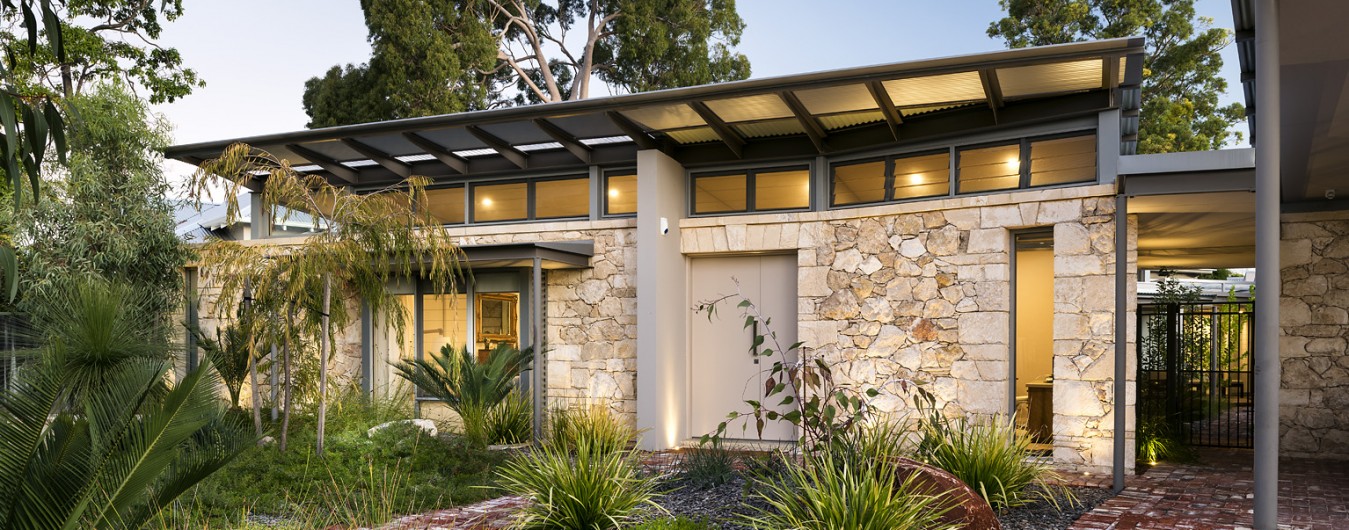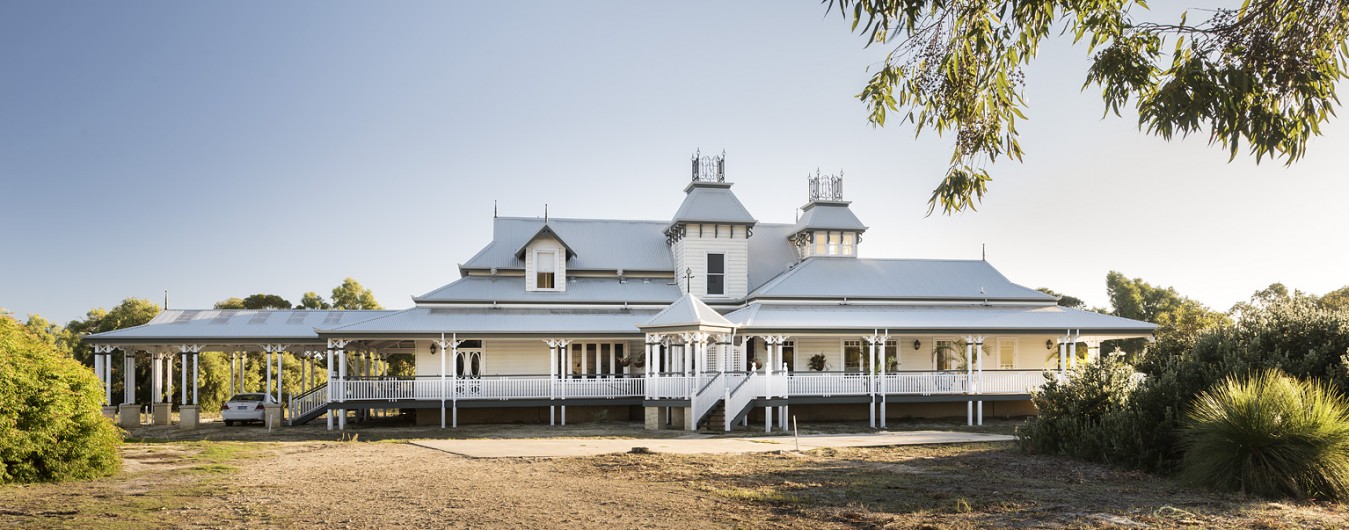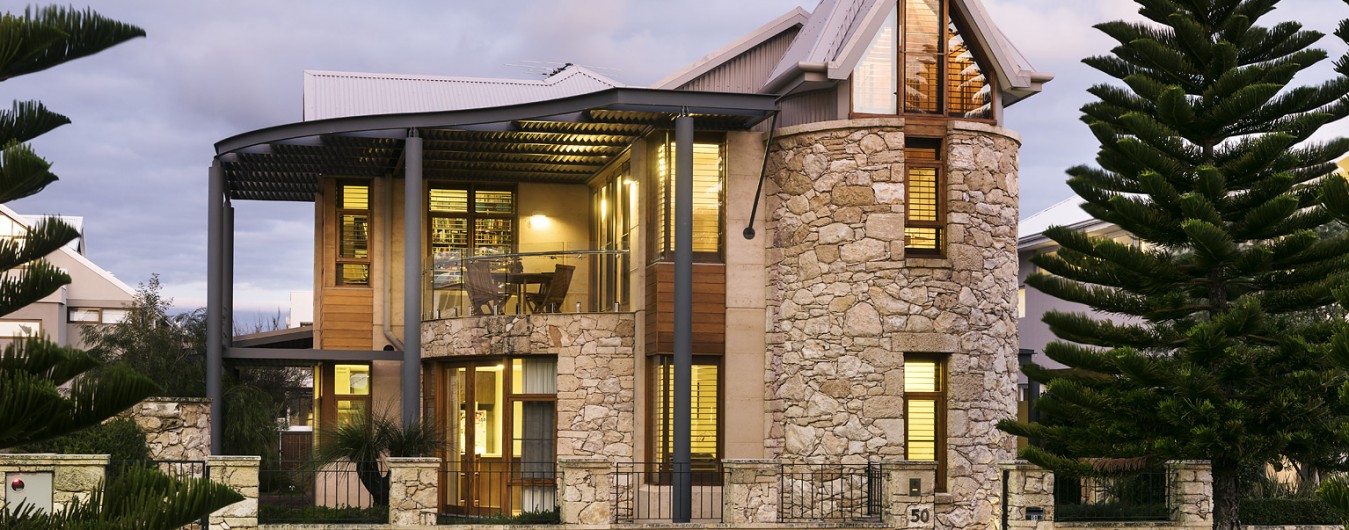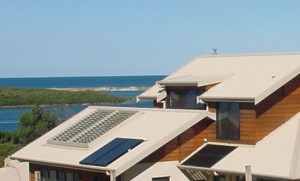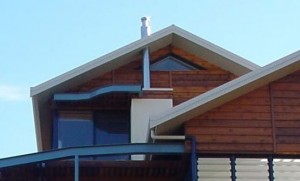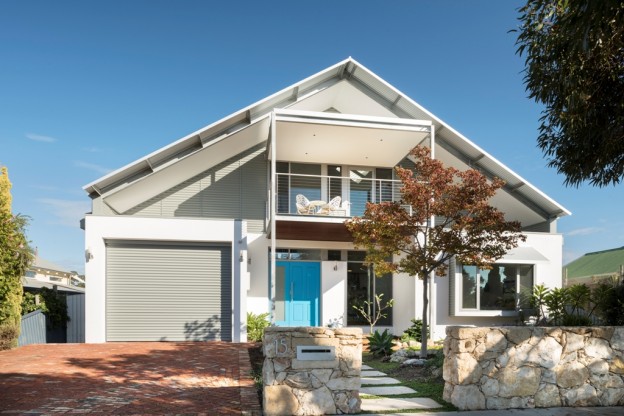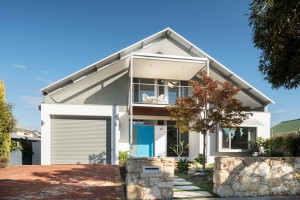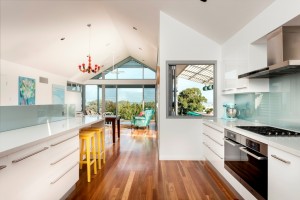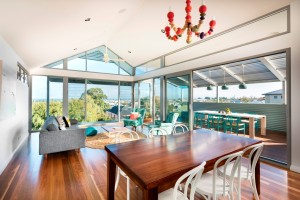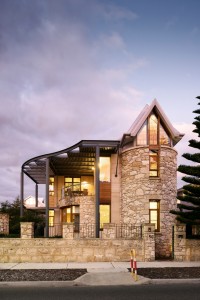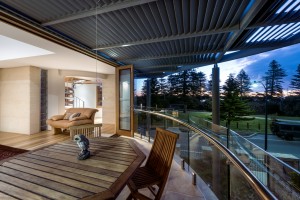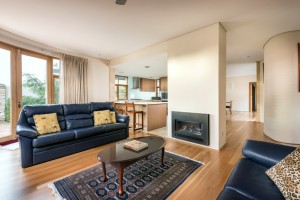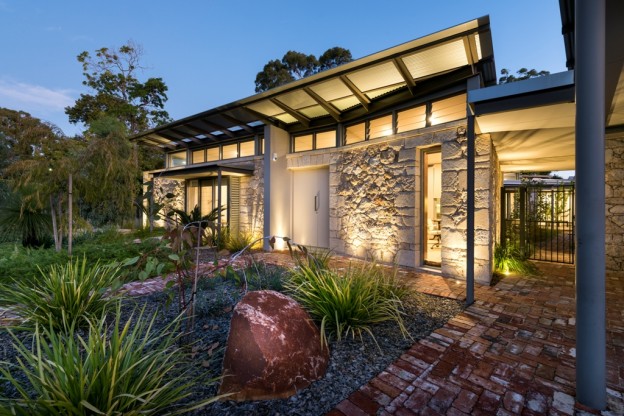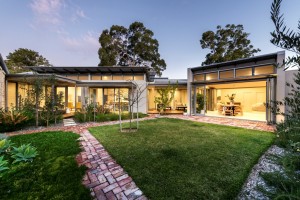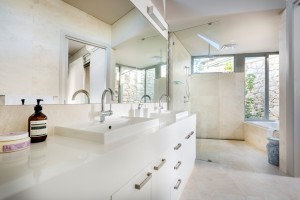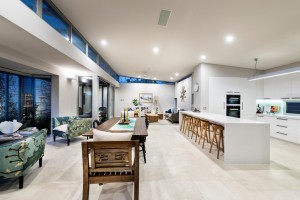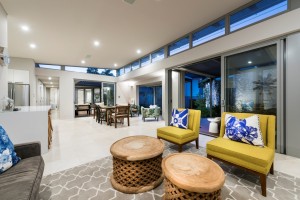Augusta House
This house was designed for the perfect passive solar site located on a hillside with views to the north. Overlooking the ocean, the home was designed to be as organic as possible. The home features a north-facing cantilevered deck and a large adjacent sun space that could be ventilated in the summer.The deck also features louvers which can be closed in the winter enclosing a conservatory space. In addition, a large master bedroom, guest facilities and an undercroft garage meet the long-term needs of Ecotect Architects’ clients in their retirement.





